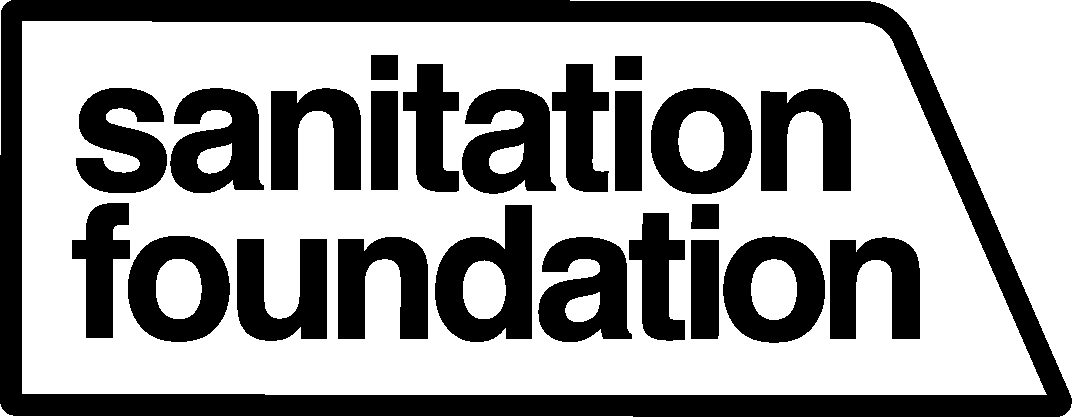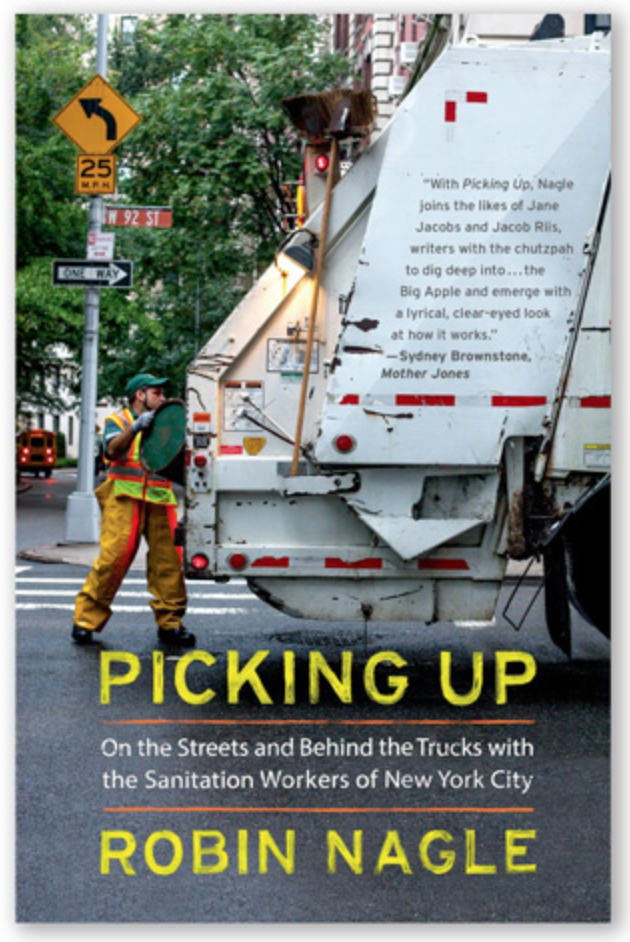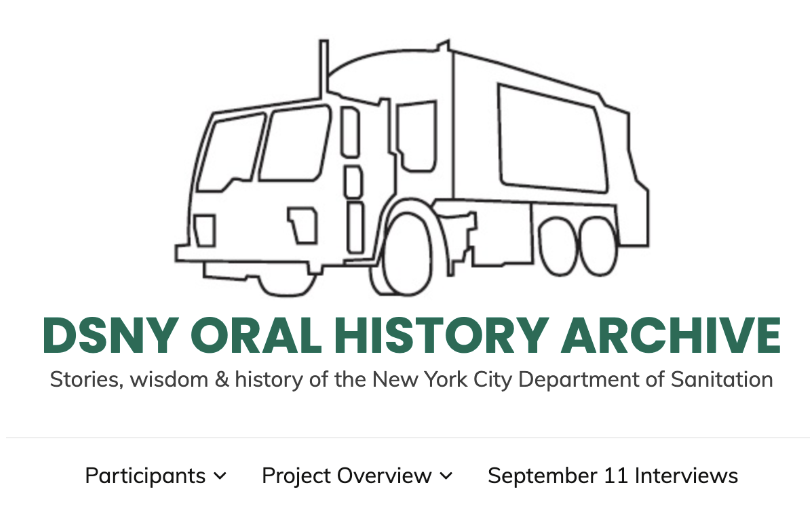Clean City Champion: NYC Sanitation Anthropologist-in-Residence Robin Nagle
“Thank your Sanitation Worker,” she says!
Get to know DSNY Anthropologist-in-Residence, Dr. Robin Nagle
By Anne Whiting
We are thrilled to present one of our favorite Clean City Champions - a lifelong DSNY supporter, a former Sanitation Worker (!), an NYU Professor and a treasured Board member of the Sanitation Foundation. Robin is a true pioneer in the field of waste management.
Have you even ever heard of an “Anthropologist-in-Residence" at a NYC agency like NYC Sanitation? The role is described as an unsalaried position intended to enhance and foster a cultural, humanitarian, and historical lens around several DSNY projects.
And do you know of any other university professors deciding to become an NYC Sanitation Worker? We didn’t think so!
Yes - this professor can drive a collection truck and plow a New York City street. Robin bridges the divide between DSNY’s civilian and uniformed workforce. She has committed her life to studying the anthropology of waste both in the field and in an academic setting.
Robin is the author of Picking Up: On the Streets and Behind the Trucks with the Sanitation Workers of New York City, an ethnographic book based on her time on the job as an official uniformed Sanitation Worker. The book chronicles NYC’s waste management efforts, highlighting how the work of DSNY is urgent and essential to the well-being of our city. Robin has also delivered an acclaimed TED Talk entitled “What I discovered in New York City trash” which has been viewed nearly over 1.8 million times.
As a clinical professor in the New York University School of Liberal Studies, Robin teaches environmental studies, anthropology, oral history, and urban studies. She specializes in the many forms of labor and infrastructure behind proper waste management, the spatial demands that sanitation work requires of urban areas, the organizational intricacies of sanitation departments, and the cultural mindsets behind waste management—of a lack thereof.
Robin also teaches graduate courses at NYU’s Experimental Humanities and Social Engagement, or XE, program: Discard Studies, Garbage in Gotham: The Anthropology of Trash; and Oral History, Labors of Waste & Value of Knowledge. The latter entails developing an ethnographic oral history of DSNY.
Needless to say, she’s a busy woman, and, like us - up to her eyebrows in garbage. We were excited to catch up with Robin.
SF: So, how did this lifelong obsession with trash start?
When I was maybe 10, my dad took me camping. We were in the Adirondacks, in that part of New York State that is so wild it felt like there had never been other humans there. We were walking a path, and we get to our campsite. There was a lean-to (one of those three sided beautiful little log cabin-ish kind of huts) looking over a pristine lake—it was bucolic, utopian, gorgeous.
Then I found the dump, where campers who preceded us were too lazy to take with them what they had brought. And it even had that signature smell, that a pile of moldering garbage has, something like spoiled milk and something citrusy—everywhere I've ever been in the world, that smell is the same. And I don't have a language to describe my rage. I was absolutely appalled, and also thoroughly confused, because if you're interested enough in wild places that you go camping in a lean-to miles from civilization, why would you leave behind your trash? And who the heck do you expect to come and clean up after you?
That second question was the question that kind of began to marinate. Everywhere I went from that point forward, I'm looking around wondering, who's cleaning up after me? So when I moved to New York, I was still looking at who cleans up after me.
Of course, it's not just the DSNY that cleans up after New Yorkers. That's the most visible, but that’s just taking my household trash. It was a while before I understood that DSNY is only a third of the picture. But it's a pretty urgent and—if you're paying attention—very visible part of the picture. Then, as an anthropologist, the questions were, “What is that worldview? What is it to be inside that job, to have that set of skills, to have a perspective from behind the wheel of a truck or a broom?”
So I did a lot of interviews. And I had a Sanitation Worker guest speaker come to my class called Garbage in Gotham: The Anthropology of Trash. (It's one of my favorite classes. It's a graduate seminar that I've taught at NYU for years and years and years—every few semesters.) But the more I learned, the more I realized that the only way I would know what I needed to know is to take the job.
SF: That’s incredible that you took the whole test!
I went through all the steps. It took about a year.
I slowed myself down by being scared to study for the commercial driver’s license permit, and you can't get the truck driving lessons from the City until you have the permit.
But, Sanitation Safety and Training has the highest success rates for CDL training of anybody anywhere in the City—DSNY’s success rate is so good that other city agencies started asking Sanitation to teach their employees how to drive. For the garbage truck (the collection truck) you need CDL Class B, which is up to a certain weight. They also teach for Class A, which is tanker trucks and huge tractor trailers—and you need Class A to be able to operate a wrecker or the tow truck. They teach you how to use that by tipping over a collection truck. And then you have to figure out how to put it right again! It's pretty cool.
SF: We’re in awe that you officially became a New York City Department of Sanitation Worker. So how did you then become the “Anthropologist-in-Residence”?
I was on the Sanitation job, and I couldn't take a leave from NYU. At the time, I was running a graduate program, which was a nine-to-nine, five-to-six days a week, 12-month, very full-time job. So I would go to work at Sanitation—be there for Roll Call, and finish at two o'clock—and then hightail it to my NYU office, often in uniform, and then be an administrator and teach and whatnot, and then go home.
It was not sustainable, so I had to step out of title and quit as a Sanitation Worker. And then I thought, “What can I bring to the job that I already have, that I don't have to quit, that contributes to the cause?” The cause being to bring positive attention to this extraordinarily vital labor, to help educate the world to its dangers and its challenges, to help raise the basic respect level. So how do I work toward that lofty goal?
We already had Mierle Ukeles as the Artist-in-Residence. She's a dear friend and a mentor and an inspiration. So I went to Mierle and asked, “What do you think of this idea of Anthropologist-in-Residence?” And with her blessing, and the approval of Vito Turso (then Commissioner for Public Information) and the legal teams, I was given the title.
SF: What is one of your favorite things to be involved in – to share your historical research and passion for – as our official Anthropologist?
I like to be hardwired into the curriculum for safety and training for new hires, or for newly promoted officers. I really think it's important for everyone on the job to know the history of the job, and know what New York was like before the job was done well, so that everyone on the job understands the Rock Bottom Importance that it has in the City's wellbeing historically and every single day. I firmly believe Sanitation is the most important uniformed workforce on the streets. (Even some people on the job don't agree with me on that.)
But I think it helps enhance the pride that I hope they take in being on the job, to emphasize, “Look at how important this is. Look at what happens when it's not done, or when it's done badly. Look at how your responsibility in something seemingly very mundane is actually life-or-death to our home.”
SF: What are some of your favorite projects you've worked on with the Sanitation Foundation?
The Food Waste Fair, ReFashion Week, the DSNY Art Show, the possibility of founding a Sanitation Museum, and the Treasures in the Trash, and Open House New York—all of the creative endeavors that have a certain cachet in fields of arts and architecture and design, and other worlds that could overlap with Sanitation Foundation.
SF: Today, what do you really hope to see on the forefront of the New York public's idea about waste and waste management?
There are three things.
My constant cry is to thank your Sanitation Workers. Your public servants and private carters. We depend on them both.
I urgently wish that the community compost budget cuts would be restored and remain intact.* A publication called Hellgate has a headline about how a compost budget cut is chump change. It’s something like 0.0006% of the total budget. A compost budget represents a commitment to a forward looking understanding of the City's environmental wellbeing.
(And this is the biggest one): A sea change understanding that the garbage is us. We make it. To blame the Department [for a mess] is like blaming undertakers for COVID. The Sanitation Department cleans up after us—to go back to the very beginning of our conversation—but we make the mess. And if we as the public would really understand that: it could change how we generate, how we let go of, and how we expect the management of our discards.
SF: What do you see as being the big waste management policy hurdles for 2024 and beyond?
I would like to see some hardwired Sanitation initiatives like compost made law—make it illegal to cut that from the budget. Take that out of the Mayor's control, which is a radical idea. (Probably no mayor would let that happen.) But if you had enough initiative from the City Council, you could make it happen. That would make it far less vulnerable to these kinds of political whims.
SF: What do you think of the Litter Baskets of the Future?
I'm interested to watch how these new garbage cans work, and how effective they are.
SF: How can we thank our Sanitation Workers? When walking by a Sanitation Worker throwing trash into the truck, just say thank you?
Or, they're parked there at a light and you're crossing: what I do is, I walk and I get to the very front of the truck and I go [Robin mimics hand in prayer and bowing.] And they go, [Mimics a big huh? ‘Okay, some crazy lady in front of a truck saying thank you—okay!]
The thank you thing is the biggest. I say that all the time. It really matters to me. Sanitation Workers do not get the kind of accolades that firefighters, for example, tend to get.
Also, give a little thought to your responsibility for your own discards and how you put them out. Be more careful about broken glass, be more careful about wood with nails sticking out of it, or tin can lids. That's one of the three major sources of harm on the job is the trash itself. And we the public could do a much better job. We could minimize that risk if we were more thoughtful about how we put it out.
Want more DSNY Anthropology? Order your copy of Picking Up—or listen to the audio book, narrated by Dr. Nagle herself! Listen to Robin’s TED Talk. Check out the ongoing development of the DSNY Oral History here. Listen to Robin’s Sanitation Foundation feature on the Person Place Thing podcast.
*Please note - At the time of this interview, Mayor Eric Adams had decreased NYC compost budget through the Fall of 2023 to discontinue community greenmarket collection services. However, as of January 2024, curbside compost is expanding services to Staten Island, and the Staten Island Compost Facility is also undergoing an expansion that will increase the facility’s capacity by nearly 2,000 percent.









